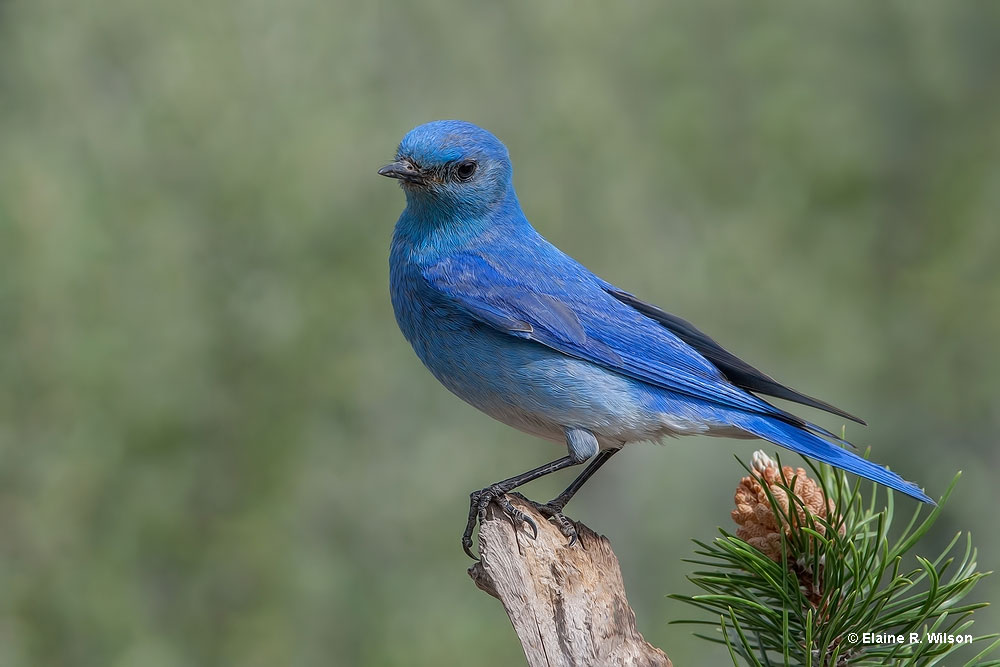
Idaho is a scenic northwestern state with 83,569 square miles of forest, mountains, sagebrush, wetlands, and farmlands. Home to 1,975,000 people, more than 430 species have also been found in this wild and beautiful place!
Idaho state bird – the Mountain Bluebird is one of the most beautiful birds this state has to offer. The blue shades of this lovely bird match the skies over Idaho and make it an appropriate bird to represent the state.
On this page
Idaho State Bird
The Mountain Bluebird became the official state bird of Idaho on February 28, 1931. Around this time, chapters of Women’s Federated Clubs were holding nationwide campaigns to encourage states to choose an official bird.
In Idaho, grade school children heeded their call and suggested that the Mountain Bluebird was the perfect candidate to be the official state bird of Idaho. The state legislature didn’t see any reason not to pick this bird to be a state symbol and quickly voted to make it official.
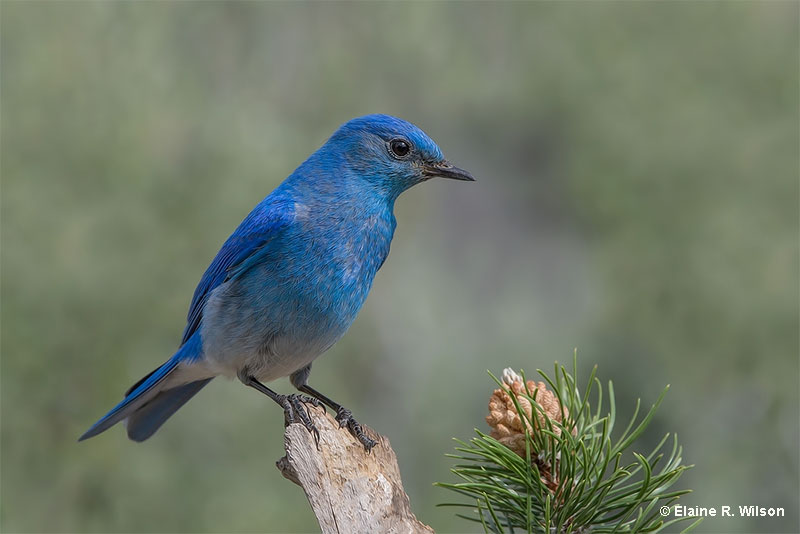
© Elaine R. Wilson
Although the wild and beautiful landscapes of Idaho are punctuated with Bald Eagles, Ospreys, and many other birds, the Mountain Bluebird was an easy and obvious choice. No other bird in the state shows such lovely pastel, sky, and shining blue colors.
No other bird in Idaho lends color to its surroundings with turquoise and sky-blue highlights.
Not to mention, in Idaho, this beautiful bird is also one of the more commonly seen bird species. When school children picked this species, and the legislature voted for it, they were undoubtedly very familiar with the Mountain Bluebird. In Idaho, these beauties thrive in open habitats throughout the state.
In fact, in many parts of the state, it’s not uncommon to see flocks of Mountain Bluebirds!
Fun Facts about Mountain Bluebirds
- The Mountain Bluebird is a fast flier. As an adaptation to the open habitats they call home, Mountain Bluebirds have long wings that help them fly more than 45 miles per hour. That’s pretty quick for a small bird!
- A sacred bird. This species plays a special role in several western Native American cultures. Its blue colors are similar to turquoise, a stone that often plays a sacred and significant role in those same cultures.
- The Mountain Bluebird is a type of thrush. This species is in the same family as the American Robin, Eurasian Blackbird, and Wood Thrush.
- Mountain Bluebirds also breed in Alaska. This migratory species ranges further north than any other bluebird. For this reason, it has sometimes been known as the “Arctic Bluebird”.
- Mountain Bluebirds sometimes hybridize with Eastern Bluebirds. On rare occasions, where the edges of the ranges of these two species meet, a Mountain Bluebird will pair with an Eastern Bluebird.
- The toughest of the bluebirds. Although Mountain Bluebirds have soft and beautiful plumage, they thrive in high, cold mountain habitats, and can withstand colder temperatures than the two other bluebird species.
- Excellent eyesight. Mountain Bluebirds can spot insect prey at a distance of 300 feet.
Identification
The Mountain Bluebird is a smallish bird somewhere between a sparrow and American Robin in size. Both sexes have a thin, black beak, dark eyes, and fairly long, black legs. They also have long wings and a medium-length tail.
Males are a beautiful cerulean or sky blue bird with a hint of a narrow gray eyering, white belly, and white undertail. In bright sunny weather, their blue colors can look glossy.
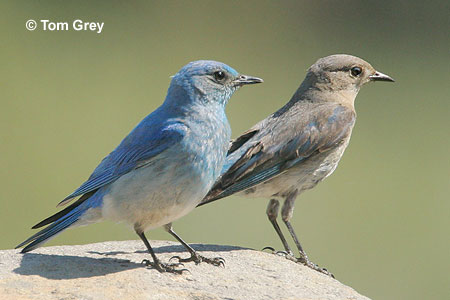
Males are also slightly bigger than females but the differences are so small, this is pretty hard to tell in the field.
Female Mountain Bluebirds are mostly pale gray with a white belly and undertail. They also have a more prominent pale eyering that is broader on the back part of the eye.
They also have some blue in their wings and on their rump and tail. Some females also have a bit of reddish-brown on their back and breast.
In flight, this species is a quick and elegant bird that swoops into bushes and small trees. They also hover over open areas.
The Mountain Bluebird is easily recognized by its sky blue plumage (the male), or having sky blue in its wings and tail, a pale chin, narrow dark beak, and broken pale eyering (the female).
What do Mountain Bluebirds eat?
Mountain Bluebirds mostly feed on insects in open habitats, usually in areas with short grass. They forage in a few different ways. They can wait on a perch and then fly down to the ground to snatch the creature with their beak.
Mountain Bluebirds can also catch insects by flying from a perch and snatching them in flight, and by picking up bugs as they hop on the ground.
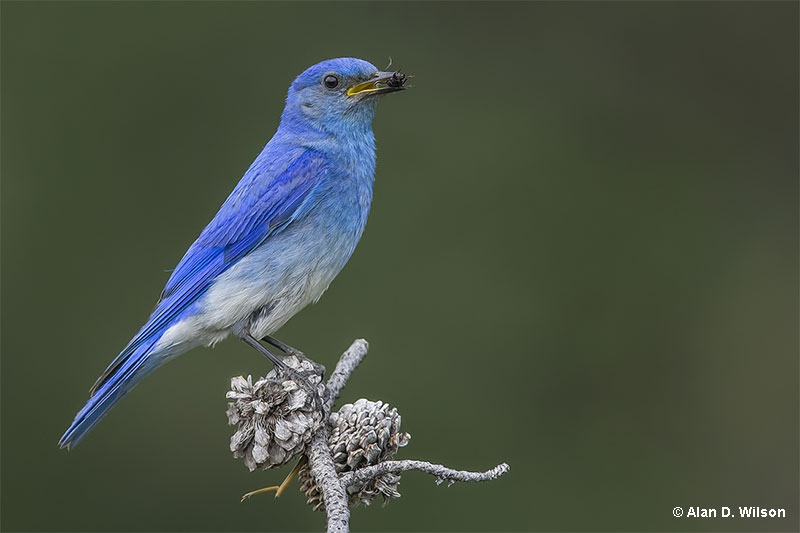
© Alan D. Wilson
This species also hovers above the ground before flying down to catch prey, and can fly to vegetation to pick bugs from foliage.
Mountain Bluebirds birds feed on just about any insect they manage to catch including beetles, flies, and caterpillars.
In winter, the Mountain Bluebird also eats juniper fruits, and some small fruits and seeds but still prefers insects. They usually pick berries while perched in a bush or short tree.
Call
The Mountain Bluebird often makes a pleasant-sounding, brief call. It is a descending “feew” or “peeer” call that sounds a lot like vocalizations made by the other bluebird species. However, calls made by the Mountain Bluebird have a more clear tone and are “thinner”.
Mountain Bluebirds also make short, harsh “check” sounding calls.
Both sexes make the short calls described above, but males also sing a more complex song. In Spring and early summer, they give a rather quiet song composed of four or seven brief phrases. The notes are a bit burry and sound like, “brif peeruh prif peeruh prif”.
Behavior
The Mountain Bluebird spends much of its time waiting on perches in wide open habitats as it watches for insect prey. While looking for food, it can also hop on and hover over the ground.
Like other bluebirds, this species also nests in tree cavities made by woodpeckers and can use nesting boxes. When nesting, pairs defend a territory but form flocks at other times of the year.
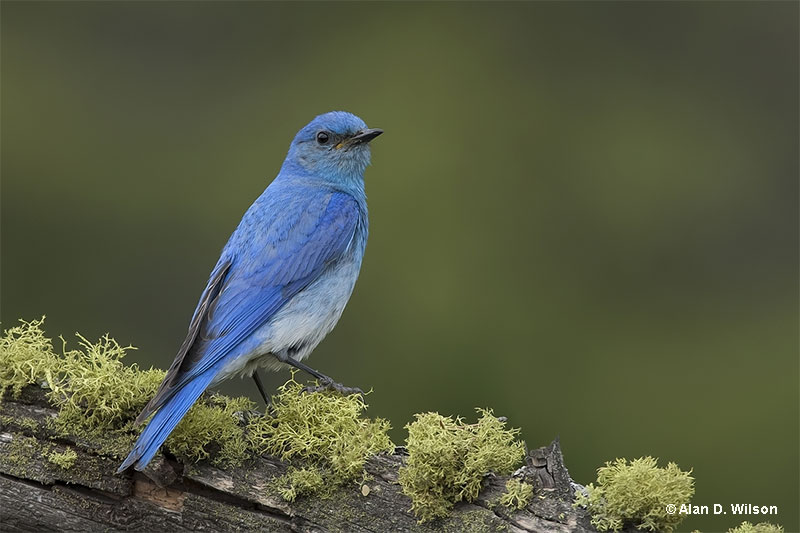
© Alan D. Wilson
They breed in parts of Alaska, western Canada, and the western USA and migrate to the western USA and northern Mexico for the winter.
This species is not a threat to people or any pets. However, a variety of predators prey on Mountain Bluebirds. They have to watch out for many raptors, including Sharp-shinned Hawks, Cooper’s Hawks, Prairie Falcons, and other birds, including various owls.
When nesting, young birds can also be susceptible to being caught by crows and other Corvids, squirrels, weasels, and other mammals.
Frequently Asked Questions
How many bird species are in Idaho?
In total, 433 bird species have been found in Idaho.
What is the rarest bird in Idaho?
The rarest bird in Idaho is the Cassia Crossbill. This small bird has an extremely small range limited to southern Idaho. It only lives in the South Hills and Albion Mountains in Cassia County and has a population of around 5,000. Another rare bird in Idaho is the Whooping Crane. This endangered species is a rare migrant in the state.
What birds is Idaho known for?
Idaho is known for the Cassia Crossbill, the Mountain Bluebird, Prairie Falcon, and various other species of montane, forest, and sage habitats of the west.
Keep learning – Most common birds of Idaho

